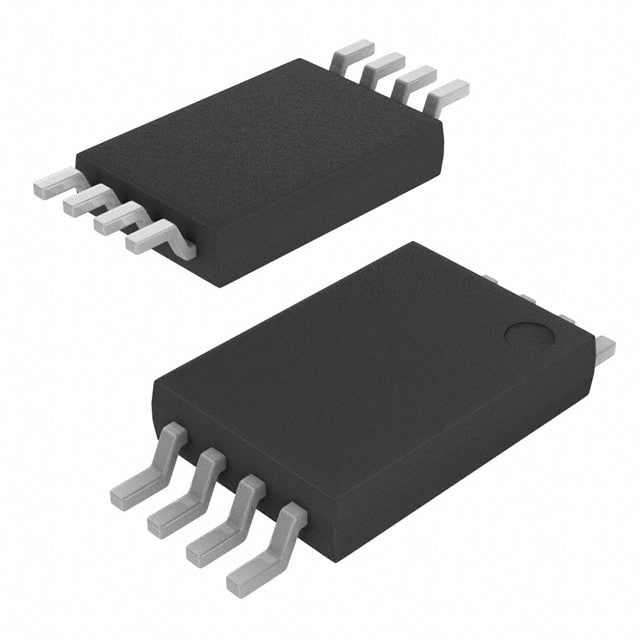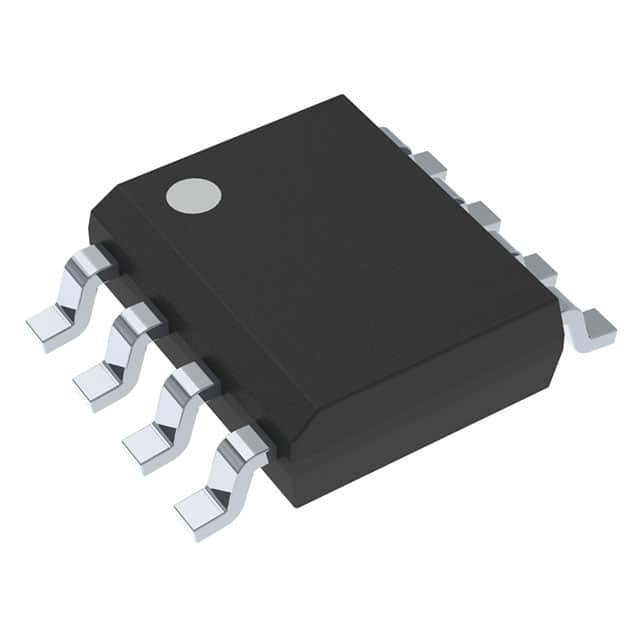Ⅰ. Introduction to Memory
Ⅱ. Physical Characteristics of Memory
Ⅲ. Electrical Characteristics of Memory
Introduction to Memory
Memory is a fundamental component of computer systems that enables the storage, retention, and retrieval of data and instructions. It refers to the electronic devices or systems used to store and access information in a digital format. Memory plays a crucial role in the operation of computers, ranging from personal computers and servers to smartphones and other electronic devices.

In computing, memory can be broadly classified into two main types:
1.Primary Memory (Main Memory):
Primary memory, also known as main memory or internal memory, is the immediate storage that directly interacts with the central processing unit (CPU). It holds data and instructions that are actively being processed by the CPU. Primary memory is characterized by its speed, as it provides fast access to data and instructions, enabling efficient execution of tasks. The two primary types of primary memory are:
(1.)Random Access Memory (RAM): RAM is a volatile memory technology that allows for random access, meaning that data can be accessed in any order, regardless of its location. RAM provides temporary storage for data and instructions during the execution of programs. However, its contents are lost when the power is turned off.
(2.)Cache Memory: Cache memory is a high-speed memory that stores frequently accessed data and instructions to provide faster access compared to main memory. It acts as a buffer between the CPU and main memory, reducing the time needed to fetch data from main memory. Cache memory is organized into multiple levels, with each level offering different capacities and speeds.
2.Secondary Memory (Auxiliary Memory):
Secondary memory, also known as auxiliary memory or external memory, provides long-term storage for data and instructions. It retains information even when the power is turned off. Secondary memory has larger storage capacities but is typically slower than primary memory. Common examples of secondary memory include:
(1.)Hard Disk Drives (HDDs): HDDs use rotating magnetic disks to store data. They offer large storage capacities and are commonly used in desktop and laptop computers.
(2.)Solid-State Drives (SSDs): SSDs use non-volatile memory chips (typically NAND flash memory) to store data. They provide faster access times, increased durability, and lower power consumption compared to HDDs.
(3.)Optical Drives: Optical drives, such as CD-ROMs, DVDs, and Blu-ray drives, use laser technology to read and write data on optical discs.
(4.)Flash Memory: Flash memory is a type of non-volatile memory commonly used in USB flash drives, memory cards, and solid-state drives (SSDs).
Memory allows for the storage and retrieval of data and instructions, enabling the execution of programs, the processing of information, and the retention of user data. The speed, capacity, and type of memory used in a computer system have a significant impact on its performance and capabilities.
It's important to note that memory controllers, as mentioned earlier, are responsible for managing the flow of data between the CPU and various types of memory. They handle tasks such as data transfer, addressing, synchronization, and error correction, ensuring efficient and reliable data storage and retrieval.

In summary, memory is a vital component of computer systems that provides the necessary storage and access capabilities to enable efficient data processing, storage, and retrieval. Primary memory (RAM and cache) provides fast and temporary storage for active data and instructions, while secondary memory (HDDs, SSDs, optical drives, flash memory) offers larger, non-volatile storage for long-term data retention. Memory controllers facilitate the communication between the CPU and memory modules, ensuring smooth and efficient data transfer.
Physical Characteristics of Memory
The physical characteristics of memory refer to the specific attributes and properties of memory devices, including their form factor, size, packaging, and interface. These characteristics can vary depending on the type of memory technology being used. Here are some common physical characteristics of memory:
7.Power Requirements: Memory devices have specific power requirements, including operating voltage and power consumption. The power requirements can vary depending on the memory technology and the specific device. It is important to ensure that the power supply meets the specified requirements to ensure proper operation and reliability.
1.Form Factor: The form factor of a memory device refers to its physical shape and dimensions. Different memory technologies have different form factors to accommodate their specific design requirements. For example, DIMM (Dual In-Line Memory Module) is a common form factor used for RAM modules in desktop and server computers, while smaller form factors like SO-DIMM (Small Outline DIMM) are used in laptops and other compact devices.
6.Speed: Memory devices have specific speed ratings that indicate their data transfer rates. The speed is usually measured in terms of clock frequency or data transfer rate (e.g., megahertz or gigabytes per second). Higher-speed memory devices offer faster data access and transfer, resulting in improved system performance.
2.Packaging: Memory devices are typically packaged in protective casings that provide mechanical support and electrical connectivity. The packaging can vary depending on the memory technology and form factor. Common packaging types include plastic packages, ceramic packages, and metal packages. The packaging also includes pins, leads, or balls that facilitate electrical connections with the memory module.
5.Capacity: The capacity of a memory device refers to the amount of data it can store. It is usually measured in units such as bytes, kilobytes, megabytes, or gigabytes. Different memory technologies and form factors have varying capacity ranges. For example, RAM modules can range from a few gigabytes to several terabytes, while solid-state drives can range from a few hundred gigabytes to multiple terabytes.
3.Size: The size of memory devices can vary depending on the specific technology and form factor. Memory modules are designed to fit into the corresponding memory slots on a motherboard or other compatible devices. Different form factors have different physical dimensions, with larger form factors providing more space for memory chips and other components.
4.Interface: Memory devices have specific electrical interfaces that define how they connect and communicate with other components in a system. The interface includes the physical connectors and signaling protocols used for data transfer. Common memory interfaces include DDR (Double Data Rate) interfaces for RAM modules and SATA (Serial ATA) or NVMe (Non-Volatile Memory Express) interfaces for solid-state drives.
These physical characteristics of memory devices are crucial for compatibility, integration, and proper functioning within a computer system. They determine how memory modules are physically connected, how much data they can store, how fast they can transfer data, and how they interact with other components in the system.
Electrical Characteristics of Memory
The electrical characteristics of memory refer to the specific electrical properties and behaviors of memory devices. These characteristics play a crucial role in determining how memory interacts with other components in a computer system. Here are some common electrical characteristics of memory:
1.Noise Immunity: Memory devices are designed to operate reliably in the presence of noise and interference. They incorporate various techniques such as shielding, filtering, and error correction codes to mitigate the effects of electrical noise and improve data integrity.
2.Operating Voltage: Memory devices operate within specified voltage ranges. They require a stable and regulated power supply to ensure proper functionality. The operating voltage can vary depending on the memory technology and the specific device. For example, DDR (Double Data Rate) RAM modules typically operate at 1.8V, 2.5V, or 3.3V, while NAND flash memory chips may have different voltage requirements.
3.Power Consumption: Memory devices consume power during their operation. The power consumption can vary depending on the memory technology, capacity, and data transfer rates. It is important to consider the power requirements of memory devices and ensure that the power supply can provide sufficient current and voltage stability to meet their needs.
4.Signal Voltage Levels: Memory devices use specific voltage levels to represent digital signals for data transfer and communication. These voltage levels define the logic states and the interpretation of binary values. The signal voltage levels can be defined by industry standards and specifications, ensuring compatibility and proper signal detection by the receiving components.
5.Impedance Matching: Impedance matching is essential for maintaining signal integrity and minimizing signal reflections. Memory devices and the components they interface with, such as memory controllers or other devices on the data bus, must have impedance characteristics that match to avoid signal distortions and ensure reliable data transmission. Proper trace impedance design and termination techniques are employed to achieve impedance matching.
6.Signal Timing: Memory devices have specific timing requirements for data transfers and control signals. Timing parameters include signal rise and fall times, propagation delays, setup and hold times, and clock frequencies. Adhering to the specified timing characteristics ensures reliable data transfer, synchronization, and proper operation of the memory device within the system.
7.I/O Standards: The input/output (I/O) standards used by memory devices define the electrical characteristics of the signals that interface with other components. Common I/O standards include TTL (Transistor-Transistor Logic), CMOS (Complementary Metal-Oxide-Semiconductor), LVDS (Low Voltage Differential Signaling), and SSTL (Stub Series Terminated Logic), among others. These standards define voltage levels, impedance, and other electrical parameters to ensure proper signal integrity, noise immunity, and compatibility.
These electrical characteristics are essential for the proper operation, compatibility, and performance of memory devices within a computer system. Adhering to industry standards and specifications ensures reliable data transfers, signal integrity, noise immunity, and overall system stability.
标签:Memory



